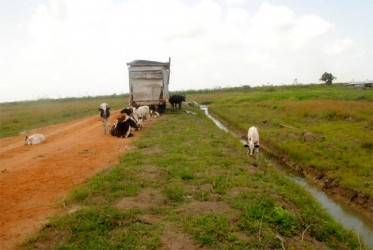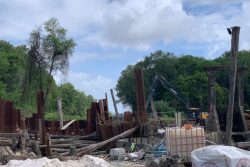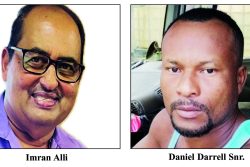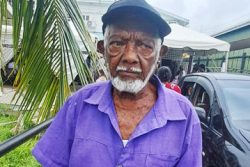More than two decades after its establishment, the Urban Dairy Cattle Farmers Association has not been able to accomplish the primary task for which it was created: to bring a sense of order to urban cattle farming.
The absence of order is a matter of public knowledge. Stray cattle in parts of the city have become the bane of motorists’ existence. Home owners too must endure the menace of roaming cattle. Truth be told busy capitals are not suitable for cattle rearing but once you talk with the cattle farmers you begin to learn that as the capital has expanded, particularly southward, the problem of urban cattle rearing has become more acute.
Under pressure from threats to enforce municipal legislation regarding stray cattle, a small group of urban farmers banded themselves together to set up the association. The allocation of more than 800 contiguous acres of land at Tyd-en-vlyt, Haags Bosch and Perseverance on the East Bank Demerara saw each farmer being allocated 12 acres of land. Association member and businessman Aditya Persaud says that apart from cattle rearing some of the farmers are using parts of their plots to cultivate cash crops.

Old habits, however, die hard. Not all of the farmers have taken up the land offer. One farmer who declined to give his name says that in some instances it is a matter of the cattle owners not wanting to divide their attention and energies between their urban homesteads and cattle-rearing pursuits on what they consider to be relatively distant lands.
Not all of the farmers hold that view. Some are of the view that the delinquents are missing an opportunity to consolidate what in some instances are unstable enterprises.
Some of the cattle owners say that while discussions have taken place in the past about possible association initiatives for the marketing of milk, little has come of those discourses.
Persaud told Stabroek Business that while the area has its limitations it provides an unprecedented opportunity while simultaneously addressing the worsening urban cattle menace.
Some of the cattle owners are looking to the Ministry of Agriculture to support the development of the land.
Access roads and dams must be built and the farmers have been seeking official assistance in the form of a bulldozer to clear the land. Some work was done with the support of Works Minister Robeson Benn. Persaud says, however, that the members of the association themselves have a responsibility to tend their 12-acre lots. “It’s a matter of keeping the cows in and using what space you have to grow cash crops if that is the way you want to go,” he says.
Meanwhile, some farmers are awaiting further land-clearing initiatives in order to take their cattle to the site. There are mixed views on whether there may not be too much dependence on government to take the project forward.
Then there is the question of transforming what in some instances are still traditional cattle-rearing initiatives into full-blown businesses. Persaud, a resident of South Ruimveldt, told Stabroek Business that many of the current urban cattle owners inherited their cattle.
The available evidence suggests that while some owners have significant numbers of cattle they have been unable in some instances to transform those into entrepreneurial enterprises. As one member put it, it is really a matter of “selling a few gallons of milk daily or selling a cow or two if you are pushed for cash.”
Some time ago the Association was approached by Sterling Products Ltd seeking an agreement on the bulk purchase of milk.
The approach, it seems, was not universally embraced by the association. The argument against the offer was the Sterling’s price was below the price to be had from retail sale to households.
Not all of the members shared that view, however. Indeed, during the discussions it was pointed out that Sterling’s offer was attended by a contract which included transporting the milk.
Some of the members continue to take the risks associated with grazing their cattle in the city and it does not appear that the association is any closer to making a greater mark on the national dairy industry. The move to outside the city is slow as the cattle owners persist in their own chosen way.





